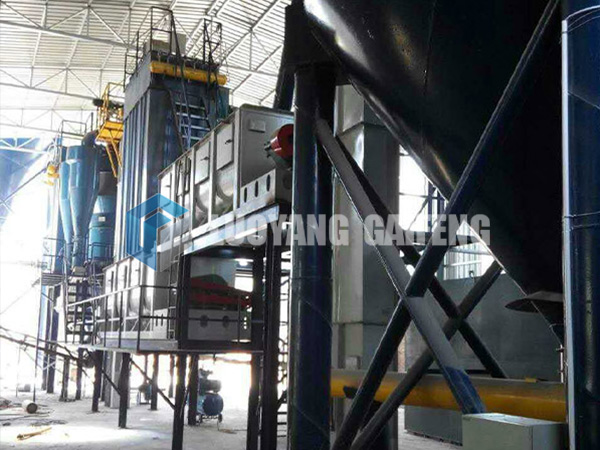What are the parts of hydrated lime equipment
Hydrated lime equipment refers to machinery and systems designed for the production, handling, and application of hydrated lime, also known as calcium hydroxide. Hydrated lime is a versatile chemical compound commonly used in various industries for purposes such as water treatment, soil stabilization, construction, pH adjustment, and more. Hydrated lime equipment can include a range of machinery and systems that are involved in the production, handling, and utilization of hydrated lime.

1. Hydrated Lime Production Equipment:
- Lime Kilns: Lime kilns are used to heat limestone (calcium carbonate) to high temperatures, driving off carbon dioxide and converting it into calcium oxide (quicklime), which is then hydrated to produce hydrated lime.
- Hydration Units: These units mix quicklime with water to create hydrated lime through a process known as slaking. Hydration can be achieved through batch or continuous systems.
2. Storage and Handling Equipment:
- Silos: Hydrated lime is often stored in silos to prevent moisture absorption and maintain its quality.
- Conveyors: Conveyors are used to transport hydrated lime from storage to different processing points or for loading onto trucks or other transport vehicles.
3. Dosing and Mixing Systems:
- Slurry Systems: Hydrated lime can be mixed with water to form a lime slurry, which can then be used for various applications such as water treatment and pH adjustment.
- Dosing Equipment: Dosing equipment accurately measures and introduces hydrated lime into various processes, such as wastewater treatment or flue gas desulfurization in power plants.

4. Application Equipment:
- Lime Spreaders: Lime spreaders are used in agricultural applications to evenly distribute hydrated lime onto soil to improve pH and soil structure.
- Slurry Sprayers: These sprayers are used to apply hydrated lime slurry to surfaces like roads for soil stabilization or to control odors in wastewater treatment plants.
5. Safety and Environmental Equipment:
- Dust Collectors: Hydrated lime handling can generate airborne dust, and dust collectors help mitigate dust emissions for worker safety and environmental compliance.
- Personal Protective Equipment (PPE): Workers handling hydrated lime should wear appropriate PPE to protect themselves from contact with the material.
6. Testing and Monitoring Equipment:
- pH Meters: Used to monitor and adjust pH levels in various processes where hydrated lime is applied.
- Quality Control Instruments: Instruments to measure the quality and properties of hydrated lime to ensure it meets the required specifications.
Hydrated lime equipment varies based on the specific application and industry needs. These systems and machinery play a crucial role in efficiently producing, handling, and applying hydrated lime while maintaining safety and environmental standards. It’s important to consult with experts in the field to select the right equipment for your intended application.


